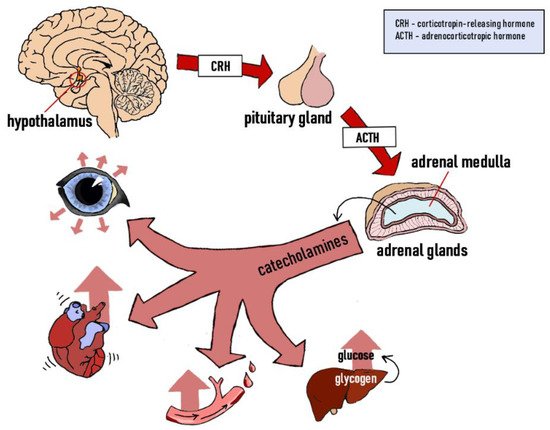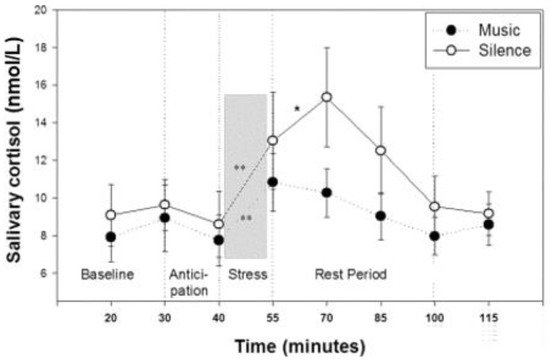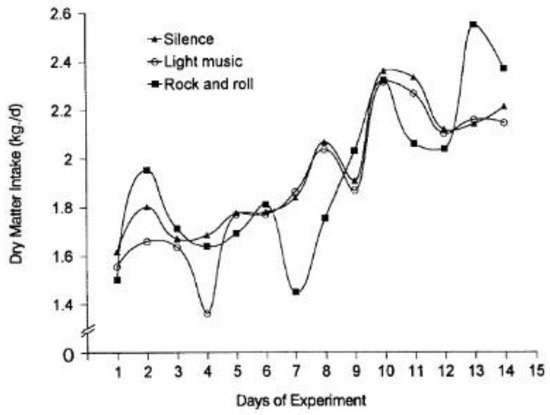The welfare of animals, especially those kept in intensive production systems, is a priority for modern agriculture. This stems from the desire to keep animals healthy, to obtain a good-quality final product, and to meet the demands of today’s consumers, who have been increasingly persuaded to buy organic products. As a result, new sound-based methods have been pursued to reduce external stress in livestock. Music therapy has been known for thousands of years, and sounds were believed to improve both body and spirit. Today, they are mostly used to distract patients from their pain, as well as to treat depression and cardiovascular disorders. However, recent studies have suggested that appropriately selected music can confer some health benefits, e.g., by increasing the level and activity of natural killer cells. For use in livestock, the choice of genre, the loudness of the music and the tempo are all important factors. Some music tracks promote relaxation (thus improving yields), while others have the opposite effect.
- music therapy
- music
- music genre
- sound waves
- livestock production
- welfare
1. Introduction
2. The Problem of Stress in Livestock


3. The Use of Music
3.1. Music and Silence

3.2. The Influence of Sound WAVES on Animals
3.2.1. The Effect of Sound Waves on Cattle
| Noise Volume [dB] | The Effects of Noise | ||
|---|---|---|---|
| Respiratory | Frequency [bpm] | Behavior | |
| 80 dB | excessive anxiety, increased heart rate, reduction in feed intake | ||
| 1 | Control group | 51.58 |
| Treatment | Live Weight (g) | Carcass Weight (g) | Yield (%) |
|---|
3.2.2. Impact of Sound Waves on Poultry

3.2.3. The Influence of Sound Waves on Pigs
-
Isolated piglets: D—0.34 s; P—3500 Hz.
-
Piglets processed by humans: D—0.81s; P—3700 Hz.
-
Sows during nursing: D—0.15 s; P—1000 Hz.
-
Sows during farrowing: D—0.1 s; P—3000 Hz.
| 65 | 22 | 8 cows—relaxed behavior |
| 1—control | 2 | |
| 90–95 dB | anxiety, frequent bowel movements, muscle tension, increased heart rate, reduction in rumen contractions, food retention | |
| ≥100 dB | morphological and biochemical changes in blood (increase in blood glucose levels, development of leukocytosis) |
| Day | Music Genre | Milk Yield [kg] | HR 1 [bpm] |
||||
|---|---|---|---|---|---|---|---|
| , | 2020 | 2 cows—slightly alert | 3 | ||||
| 1461 | 72.3 | 2 | Country | 46.37 | 60 | 18 | 9 cows—relaxed behavior, 1 cow—slightly alert |
| 2—low level dinner music | 2045 | 1491 | 72.9 | 3 | Rock | ||
| 3—high level dinner music | 2053 | 45.9 | 66 | 16 | 3 cows—relaxed behavior, 7 cows—alert |
||
| 1480 | 72.0 | 4 | Jazz | 44.48 | 57 | 16 | 7 cows—relaxed behavior, 3 cows—slightly alert |
| 4—low level rock and roll music | 2032 | 1486 | 73.1 | 5 | Reggae | 45.42 | 61 |
| 5—high level rock and roll music | 1942 | 1398 | 72.0 | 18 | 10 cows—relaxed behavior | ||
| 6 5 | Pop | 38.8 | 63 | 19 | 6 cows—slightly alert, 4 cows—relaxed behavior |
||
| 7 5 | Classical music | 43.5 | 59 | 14 | 10 cows—relaxed behavior (5 ofwhich were ruminating) |
||
| 8 | Opera | 34.54 | 63 | 15 | 9 cows—relaxed behavior, 1 cow—slightly alert |
||
| 9 | Rap | 42.11 | 59 | 18 | 3 cows—relaxed behavior, 3 cows—slightly alert, 4 cows—confused 4 |
||
| 10 | Hip Hop | 45.42 | 64 | 20 | 7 cows—relaxed behavior, 3 cows—slightly alert |
||
| 11 | Lullaby | 48.26 | 56 | 15 | 10 cows—relaxed behavior (1 cow fell asleep) |
||
| 12 | Heavy Metal | 46.84 | 67 | 21 | 1 cow—relaxed behavior, 9 cows—alert |

-
String–slow (SS; 65 bpm);
-
String–fast (SF; 200 bpm);
-
Wind–slow (WS; 65 bpm);
-
Wind–fast (WF; 200 bpm).
